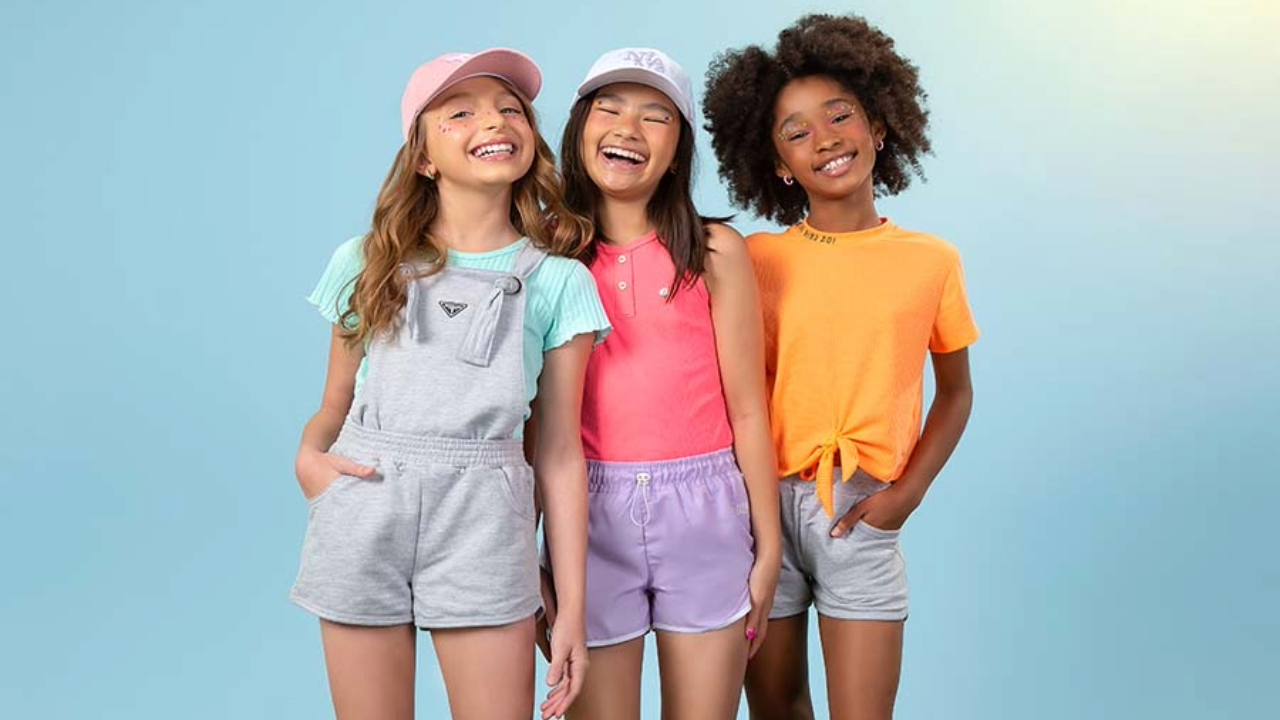Comprar roupas infantis pode ser uma experiência divertida, mas também pode se tornar um desafio se não soubermos por onde começar. A variedade de opções no mercado é enorme, e é fácil se perder em meio a tantas cores, estampas e estilos. No entanto, ao considerar alguns fatores essenciais antes de ir às compras, é possível fazer escolhas mais inteligentes e garantir peças que sejam confortáveis, duráveis e cheias de estilo para os pequenos. Confira o que você precisa ter em mente antes de sair em busca do guarda-roupa perfeito para seus filhos.
Conforto: Priorize o bem-estar da criança
O conforto é o fator mais importante a ser considerado ao comprar roupas infantis. Crianças estão sempre em movimento, seja brincando, correndo ou se aventurando em novas descobertas, e precisam de roupas que não restrinjam seus movimentos. Optar por tecidos macios e respiráveis, como algodão, linho e bambu, é uma ótima maneira de garantir o conforto necessário para o dia a dia.
Dica importante: Evite tecidos sintéticos, como poliéster, que podem causar irritações na pele e não são tão respiráveis quanto os tecidos naturais. Roupas com elásticos suaves, costuras reforçadas e etiquetas que não irritam a pele também são fundamentais para o conforto.
Durabilidade: Escolha peças que resistam ao uso diário
Roupas infantis passam por muita coisa: lavagens frequentes, brincadeiras intensas e até acidentes com comida e tinta. Por isso, a durabilidade das peças deve ser um dos principais critérios na hora de escolher o que comprar. Prefira tecidos mais resistentes, como denim (jeans), algodão grosso e moletom de qualidade, que são menos propensos a rasgos e desgastes.
Dica importante: Verifique as costuras das roupas. Costuras duplas ou reforçadas indicam maior resistência e uma vida útil mais longa. Também prefira zíperes metálicos e botões bem presos, que são menos suscetíveis a danos.
Estilo e praticidade: Busque o equilíbrio perfeito
O estilo também é uma consideração importante ao comprar roupas infantis. As crianças adoram se sentir bem com o que estão vestindo, e é importante permitir que elas expressem sua personalidade através das roupas. No entanto, é essencial buscar um equilíbrio entre estilo e praticidade. Roupas que sejam fáceis de colocar e tirar, como macacões com botões de pressão, camisetas de gola larga e calças com elástico, facilitam o dia a dia dos pais e das crianças.
Dica importante: Dê preferência a peças básicas e versáteis, que possam ser facilmente combinadas entre si, como camisetas lisas, calças jeans ou leggings e suéteres de cores neutras. Essas peças permitem criar diferentes looks com um número reduzido de itens no guarda-roupa.
Tamanho e ajuste: Pense no crescimento da criança
Crianças crescem rapidamente, e isso pode ser um fator decisivo na escolha do tamanho das roupas. Comprar peças um pouco maiores garante que a criança possa usá-las por mais tempo. Roupas ajustáveis, como calças com elástico na cintura, vestidos com alças reguláveis ou camisetas com modelagem ampla, são excelentes opções para acompanhar o crescimento dos pequenos.
Dica importante: Fique atento à tabela de medidas fornecida pelas lojas e, se possível, leve as medidas da criança antes de comprar. Isso ajuda a evitar trocas e devoluções, garantindo que as peças tenham o ajuste ideal.
Orçamento: Defina um limite de gastos
O orçamento é uma consideração prática antes de qualquer ida às compras. Definir um limite de gastos e fazer uma lista das peças que realmente são necessárias pode evitar compras por impulso e garantir que o dinheiro seja investido em roupas de qualidade e duráveis. Lembre-se de que comprar menos pode significar comprar melhor, optando por peças que tenham uma vida útil maior e um valor agregado ao guarda-roupa infantil.
Dica importante: Aproveite promoções e descontos em lojas físicas e online, e considere a compra de roupas infantis de segunda mão, que muitas vezes estão em ótimo estado e a preços mais acessíveis.
Sustentabilidade: Considere o impacto ambiental
A sustentabilidade tem sido uma preocupação crescente para muitos pais na hora de comprar roupas infantis. Marcas que utilizam materiais orgânicos, práticas de produção ética e opções de reciclagem ou reaproveitamento de roupas são cada vez mais valorizadas. Investir em roupas sustentáveis é uma forma de garantir não apenas a qualidade e durabilidade das peças, mas também contribuir para um futuro mais responsável.
Dica importante: Procure por selos de certificação ecológica, como o GOTS (Global Organic Textile Standard) ou Fair Trade, que garantem práticas sustentáveis e justas durante a produção das roupas.
Participação da criança: Incentive escolhas conscientes
Sempre que possível, envolva a criança na escolha das roupas. Isso não apenas ajuda a garantir que ela se sinta confortável e feliz com o que está vestindo, mas também ensina sobre o valor da escolha consciente desde cedo. Permitir que a criança participe da seleção das peças estimula sua autonomia e ajuda a desenvolver seu próprio senso de estilo.
Dica importante: Dê algumas opções e deixe que a criança escolha entre elas. Isso cria um equilíbrio entre o gosto pessoal da criança e as necessidades práticas do guarda-roupa.
Considerar todos esses aspectos antes de comprar roupas infantis pode ajudar a garantir que você faça escolhas mais acertadas e eficientes, proporcionando um guarda-roupa que atenda às necessidades de conforto, durabilidade e estilo das crianças. Ao planejar as compras com cuidado, é possível economizar, evitar desperdícios e ainda contribuir para um consumo mais consciente e sustentável.



